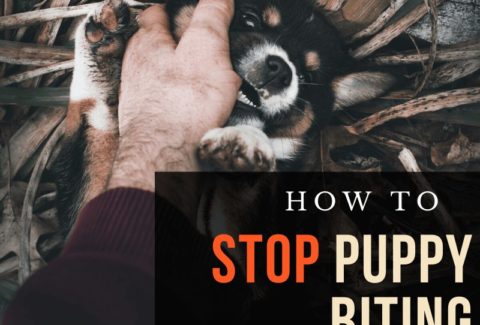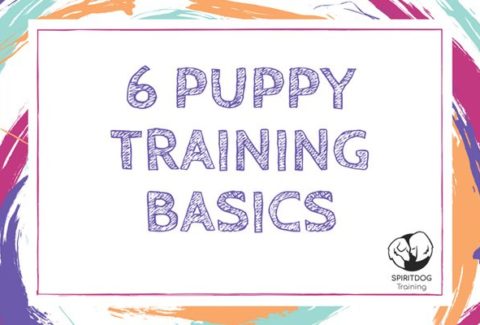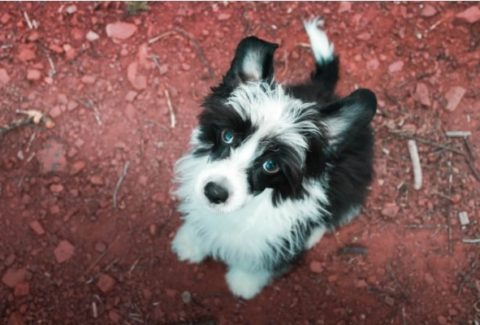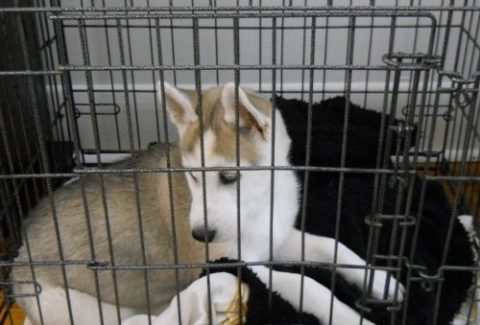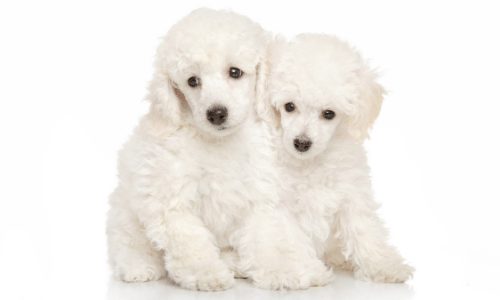How To Discipline A Puppy
May 19, 2021 2021-06-10 21:10How To Discipline A Puppy

Did you recently add a puppy to your family and now he is driving you sheer crazy? Maybe biting, barking, chewing everything up and generally not doing what you had in mind?
Whenever I teach local classes on how to puppy train, I get asked about discipline. Is it ever ok to use physical punishment or scold your dog for bad behavior? How to stop a puppy from biting? And can you teach everything your puppy needs to know through positive reinforcement?
Let’s dive into the topic of puppy discipline!
It is OK to punish your puppy?
The short answer is: no. It is not OK to punish your puppy.

The most important thing during a puppy’s first months of life is to teach him that you are his friend and protector and that you are reliable, predictable and fun.
Your puppy most likely has no idea what you are punishing him for if you discipline him. It is impossible for him to comprehend what went wrong when you use yelling, time-outs or even smacking as a consequence for his behaviors.
The puppy won’t associate the discipline with something he did – rather he will associate the discipline with you as an owner and learn to not trust you. This is the very last thing you want!
The argument often comes up that dogs also – at times harshly – correct each other and that it is therefore ok to discipline your dog. I disagree with that strongly.
Dogs have very intricate social structures and they learn to treat other like they are being treated. If your puppy has for example experienced that one dog at the dog park can be bold and rude, he might be stand-offish around him and snap when this dog comes too close. If your new puppy on the other hand learned that a dog is always friendly and sweet, he himself will be much more gentle and docile around that nice dog.
The same goes for the relationship between a puppy and his owner. If the owner chooses to be harsh and heavy-handed, the puppy will remember this and adapt his own behavior. Many problematic behavior cases I see while training dogs in Albuquerque originated in this way.
On the other hand – if the owner is predictable and kind, the puppy is much more likely to bond quickly and learn just as well – actually even much better 0 through positive reinforcement.

How long should you punish your dog?
As already clear from the above – you should just not punish your dog in the first place. Zero minutes and zero seconds is how long a punishment should last.
Corrections are not the way to teach puppies about the world. Smart management, setting them up for success and rewarding good choices is a much better and proven way to teach your dog what you want.
How does this look in specific situations? Let’s see what alternatives to discipline there are for bad behaviors.
How Do You Train A Puppy Not To Bite?
I wrote in a lot of detail about how to stop puppy biting here. Basically, puppies are born to be mouthy and take as many things as possible into their mouth. We need to make sure to offer them a lot of smart choices for chewing so that they can practice good behavior.
90% of puppies that I see when I work with clients do not have the right amount of the right kind of chew toys to satisfy their chewing behavior.
Puppies do not bite because they want to hurt, antagonize or dominate their owner (dominance theory has been shown many times to not be applicable to our modern household dogs). It is impossible to address how to stop a puppy biting without understanding the role that chewing desire plays in this. And some puppies don’t stop chewing for a long time …
Don’t use any discipline at all – simply by providing him with smart, durable and safe options for chewing you will be able to cut down on the biting a lot.
Chewing over discipline
As soon as you get a new puppy, plan several chewing sessions into his day. These chews should be made out of some kind of animal matter or otherwise edible substance. Kongs or similar rubber toys that are stuffed and frozen make fantastic, safe and popular chew toys. Other options are bully sticks or cow hooves.
When you go to a pet store to look for toys that your puppy can chew on, the first options offered are usually not the best choice. Traditionally, rope toys, plain rubber toys or even stuffed animals have been used for puppies to chew on.
However – Plain rubber, fabric or rope toys are not sufficient chew toys. A puppy will not chew on these enough to stop biting you. No matter how many little rope toys from the pet store you put into your puppy’s kennel – he will probably barely look at them and then go for your hands as soon as he gets a chance.
Let’s see how exactly this makes him bite more.
You can envision your puppy’s daily desire to chew, bite, and generally gain reinforcement through his mouth like a mountain:

Ideally, you want to wear this mountain down every day. Once your puppy has chewed his mountain of chewing desire away, he will not show any more undirected mouthiness.
(It is sort of an opposite Cup Theory – If Your Dog Doesn’t Listen – What Fills His Cup?)
Chewing on rubber/plastic/rope/stuffed toys often only does this to the mountain:

Most of that mountain is still there – and so is your puppy’s desire to mouth and chew your arms!
Because rubber does not taste good. Your puppy will chew it enough to take the very edge of his chewing desire – the tip of the iceberg – but not enough to wear down the entire mountain. He rather turns to something that actually takes good for that, such as your hands.
If you don’t want your dog to target his “undirected mouthiness” towards you, you need to give him plenty of opportunities to take down this mountain every day, with chew articles that taste really good.
That means that they should ideally be made from animal matter – such as bully sticks, cow hooves, yak milk chews or (a big favorite of mine): Stuffed Kongs.
Once the chew items taste good for your puppy, he will interact with them much longer, grinding off more and more of his “mountain of mouthiness”:

Once your dog has “chewed out” his daily mouthiness mountain, he will no longer show the undirected mouthing. His desire to be active with his teeth has been fulfilled.
So – make sure that you are providing delicious, enticing alternatives to biting hands you can stop puppy biting quickly in most cases. You need to be very proactive in this and not wait until the puppy is already biting you. Instead make sure that you set him up for good behaviors by giving him chew toys before he ever starts to become a little biting whirlwind.
If your puppy bites during play
Ok – your puppy now has a lot of awesome chew items that he can bite down on all he wants, day and night. Is he still biting you? It might be over-arousal or play-related biting.
Here is how to stop a pup biting that exhibits this behavior when he is overly excited.
A young dog has very little impulse control. They act out of the spur of the moment without thinking first. In play, this might mean that your puppy becomes so enthralled in the game that he forgets which toy he is supposed to bite and how to tug carefully. He simply goes all in and teeth might end up everywhere!
The solution to this is similar to the chew toys – your dog needs different toys. Nearly all traditional puppy toys that you will find at the pet store are way too small. They basically encourage the puppy to let his teeth slip onto your hands and arms.
In addition, the toys are usually too hard as well. Especially for teething puppies, it is important that you pick very soft toys. Otherwise the choice is easy for your puppy:
Hard toy, soft arms – which one will he rather bite?
You can make your own prefect puppy toy by taking an old t-shirt, towel or a corner of a fleece blanket and playing with this. By using a toy that is big and soft you will be much more successful in having the puppy bite this (and not your hands).
How do you punish a dog that won’t listen?
If you have a dog that repeatedly ignores your cues, you need to step back and assess the situation from a broader training perspective.
Chances are that your dog is not ignoring your cue on purpose or to be defiant. Usually, the way a situation is set up actually encourages (and even rewards!) the bad behavior. This is why the #1 question a dog trainer will ask you is:
What does the dog get out of his behavior? If we can answer that question, then we know how we need to change the setup in a way that the positive behavior – not the bad one – gets rewarded. Because often, the reward comes from performing the behavior itself (and not the treats that we may or may not carry in our pocket).
Let’s take for example leash walking. Many dogs pull badly on leash. This is not only frustrating for the owner, but actually dangerous in the case of dogs that physically overpower their owners and hurt them badly.
The pulling dogs don’t seem to mind being scolded, receiving a leash pop (which you should not do) or being told over and over “no pull!”.
What happens in the dog’s mind is that he still gets to go on his walk (even with all the discipline going on). No matter whether you make a loud noise to startle him or try to pull back to stop his behavior, he gets out of the scenario what he wants: To keep on going. Simply being on a walk is so much fun for him that he will put up with all the scolding and discipline involved.
He is not defiant – he simple does not know what behavior you want him to show. Dog training is a lot about finding out what it is that our dogs want and using this to our advantage in shaping their behaviors.
A much better approach is to turn around as soon as your dog ever starts to pull. The second your dog reaches the end of the leash, turn around and go the other way. This way your dog will learn that pulling leads to aborting his journey. Because he is very interested in keeping going, he will start to show the behavior that allows him to keep going – and this is not pulling.
This is not going to give you a dog in perfect heeling position the very first time you try it. You need to keep in mind that your dog has probably spent quite some time rehearsing the wrong behavior and is just starting to understand what new, good behavior is.
Every time we “change the rules”, we need to be patient and wait for our dogs to understand and think through the new training scenario.
Dogs aren’t great with language
It is important to realize that dogs are not inherently good at understanding spoken language. They communicate with each other through body language and need time to learn our form of conversation.
Chances are, when you tell your dog to do a certain behavior (perhaps a Sit Stay or Come), he does not have a good idea of what you are asking. Dogs are much better at understanding actions and consequences rather than words.
This means that you need to explain to your dog which behavior you want him to do by using rewards for the correct responses.
Break every single task up in as little small bits as possible. The more you are asking for at once, the more likely it is that your dog will fail to perform the wanted behavior.
Let’s for example look at a Sit Stay: You cannot expect your dog to show you a perfect stay from the very first training session. Instead of telling him “Stay … Stay …. STAY!” over and over, let the rewards speak for themselves.
Give your dog one treat after the other for sitting, these treats can be as frequent as every 1-2 seconds. Do this with 15 treats, then take a little 5 second break and continue the treats after the break. This type of training builds up a “reinforcement history” and makes it easy for your dog to remember what it is he is supposed to do.
Maturing can change your pup’s behavior
As your dog is growing older, he will become more independent and insistent on the things he sets his mind to. An 8 month old puppy will be a lot wilder and potentially “misbehave” than an 8 week old puppy.
This is completely normal and expected. Do not feel as if you did something wrong – you did not!
In some cases, neutering your male puppy can help to relax him a little more and make training easier.
While you are at this: Turn the Spay/Neuter into so much more. Check out Gallant to learn about Stem cell banking!
How do you discipline a puppy?
As written above – you just don’t. Instead of trying to use loud noise, physical punishment, scolding or time-outs to change your dog’s behavior, good and effective training utilizes smart management and rewarding good choices.
Bad behavior disappears once we show our dog what it is that we want, and how good behavior pays off. Don’t try to discipline your dog in training – he will not learn a lot and may start to distrust you.
Instead, make training something he looks forward to by helping him learn through fun experiences. Especially for a new puppy this is very important: You absolutely want him to see you as a trustworthy, reliable and predictable friend and not someone who is punitive.
If you need more ideas, check out our free 14-day course below! It is not too late to start training even if your puppy is already a couple months old!
Steffi Trott
Related Posts
How To Stop Puppy Biting – The Ultimate Guide
100 Ideas For Socializing Your Quarantine Puppy
6 Puppy Training Basics
Growing Up A Spiritdog: 4 Months
Crate Training A Puppy: The Smart Way
Poodle Pregnancy
Check out our effective and affordable online dog training courses!
-
Sale Product on sale
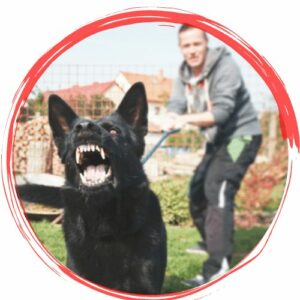 Tackling Reactivity Bundle
Tackling Reactivity Bundle
MONEY BACK GUARANTEE$564.00$49.00 -
Sale Product on sale
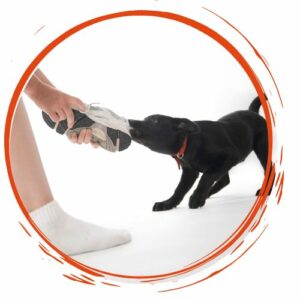 Perfect Obedience Bundle
Perfect Obedience Bundle
MONEY BACK GUARANTEE$349.00$49.00 -
Sale Product on sale
 Ultimate Puppy Bundle
Ultimate Puppy Bundle
MONEY BACK GUARANTEE$416.00$49.00 -
Sale Product on sale
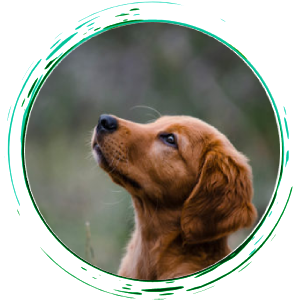 The Perfect Focus Bundle
The Perfect Focus Bundle
MONEY BACK GUARANTEE$445.00$169.00 -
Sale Product on sale
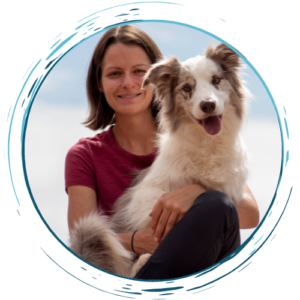 Ultimate Masterclass Bundle
Ultimate Masterclass Bundle
MONEY BACK GUARANTEE$2,213.00$499.00

